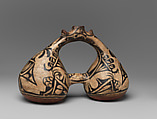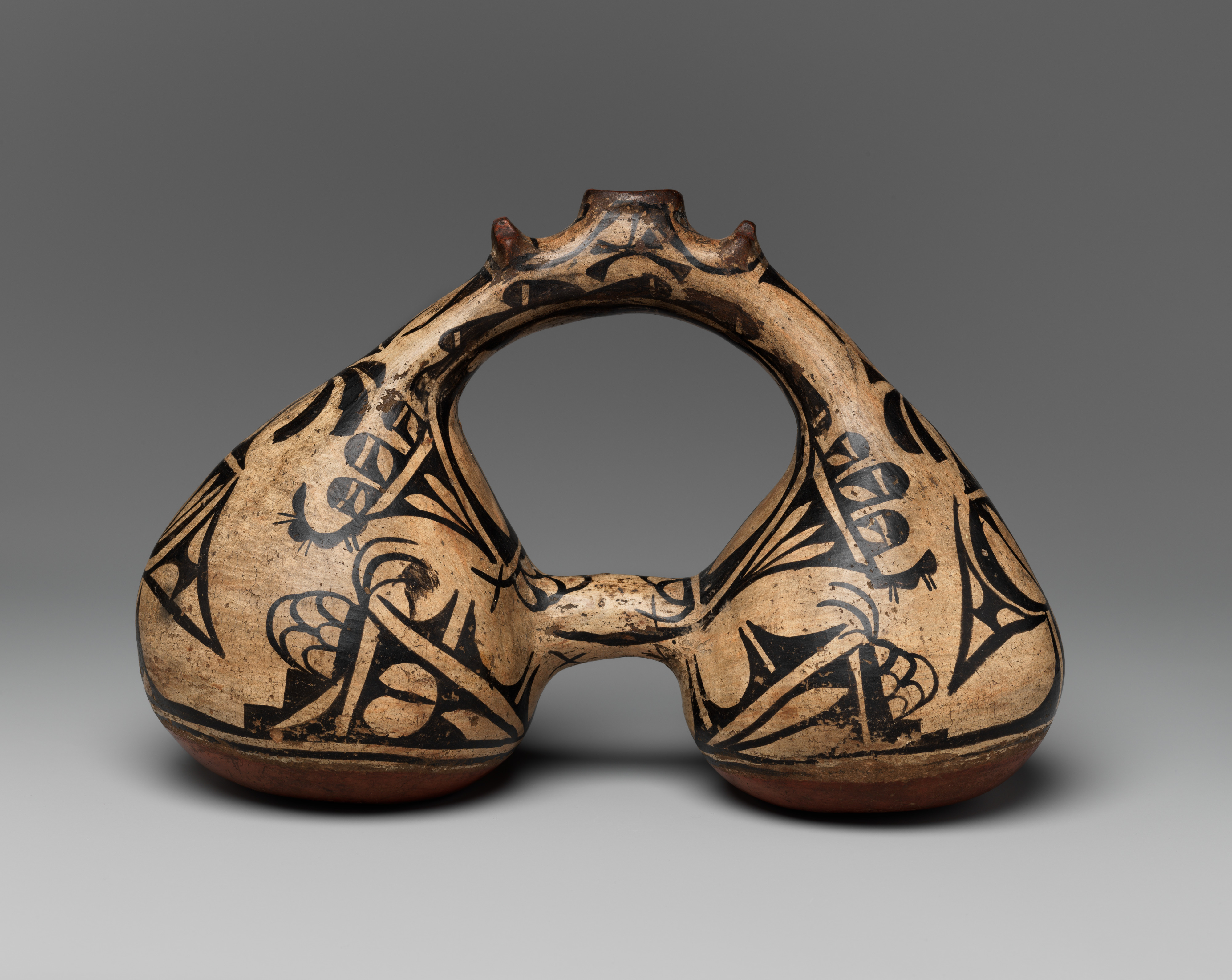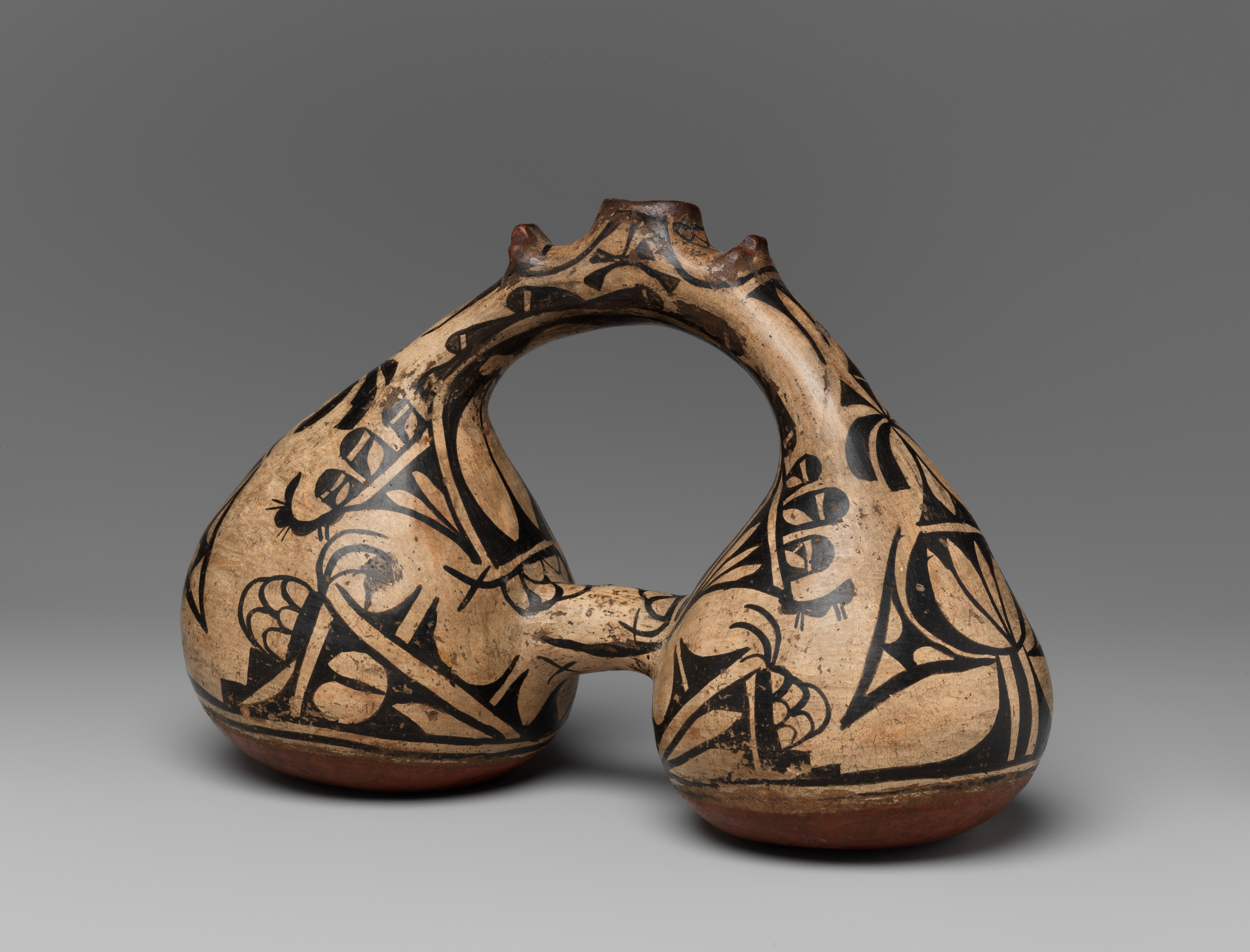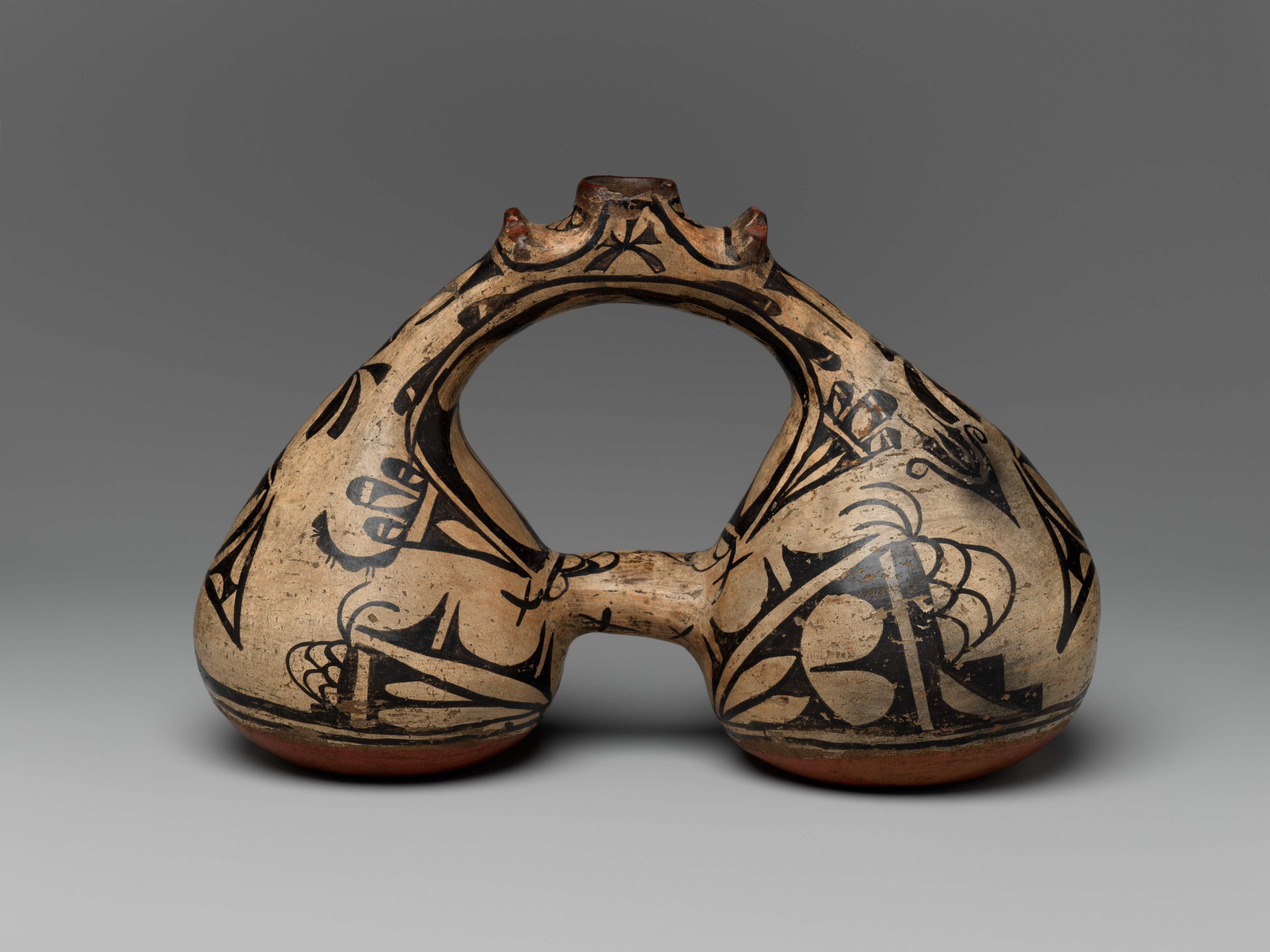Double-lobed polychrome canteen
Tewa (San Ildefonso Pueblo), Native American
Diverse Pueblo communities of the Southwest share aesthetic and religious practices that center on the vitality of the unpredictable desert landscape and the life-giving power of water and rain. Pueblo pottery regularly features imagery that reflects deep spiritual and community connections to local landscapes and other sacred spaces. Used to collect and store rainwater, the walls of this double-gourd canteen were built with hand-pulled clay coils and painted with locally collected desert pigments and slips.
This double-lunged polychromatic ceremonial jar embodies rich Tewa symbolism, including images of clouds, water, plant-life, and birds painted in black bee plant on a cream-colored background. The double chambers, connected at the center, represent Tewa male-female dualities and resemble gourds, which are part of Pueblo agricultural life and ceremonial dances. Feather designs reference sky and prayers. The intentional asymmetrical designs are typical of Tewa pottery which embraces the duality of all living beings representing reciprocal relationships with natural environment and respect for natural life.
Due to rights restrictions, this image cannot be enlarged, viewed at full screen, or downloaded.
This artwork is meant to be viewed from right to left. Scroll left to view more.





